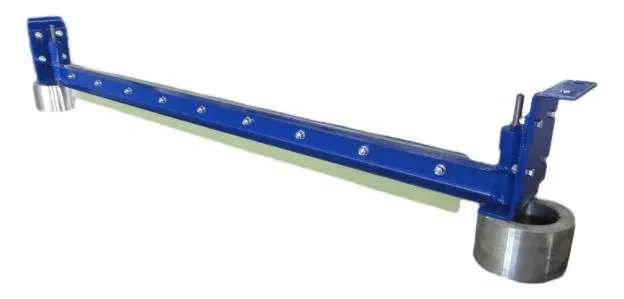 Afrikaans
Afrikaans  Albanian
Albanian  Amharic
Amharic  Arabic
Arabic  Armenian
Armenian  Azerbaijani
Azerbaijani  Basque
Basque  Belarusian
Belarusian  Bengali
Bengali  Bosnian
Bosnian  Bulgarian
Bulgarian  Catalan
Catalan  Cebuano
Cebuano  Corsican
Corsican  Croatian
Croatian  Czech
Czech  Danish
Danish  Dutch
Dutch  English
English  Esperanto
Esperanto  Estonian
Estonian  Finnish
Finnish  French
French  Frisian
Frisian  Galician
Galician  Georgian
Georgian  German
German  Greek
Greek  Gujarati
Gujarati  Haitian Creole
Haitian Creole  hausa
hausa  hawaiian
hawaiian  Hebrew
Hebrew  Hindi
Hindi  Miao
Miao  Hungarian
Hungarian  Icelandic
Icelandic  igbo
igbo  Indonesian
Indonesian  irish
irish  Italian
Italian  Japanese
Japanese  Javanese
Javanese  Kannada
Kannada  kazakh
kazakh  Khmer
Khmer  Rwandese
Rwandese  Korean
Korean  Kurdish
Kurdish  Kyrgyz
Kyrgyz  Lao
Lao  Latin
Latin  Latvian
Latvian  Lithuanian
Lithuanian  Luxembourgish
Luxembourgish  Macedonian
Macedonian  Malgashi
Malgashi  Malay
Malay  Malayalam
Malayalam  Maltese
Maltese  Maori
Maori  Marathi
Marathi  Mongolian
Mongolian  Myanmar
Myanmar  Nepali
Nepali  Norwegian
Norwegian  Norwegian
Norwegian  Occitan
Occitan  Pashto
Pashto  Persian
Persian  Polish
Polish  Portuguese
Portuguese  Punjabi
Punjabi  Romanian
Romanian  Russian
Russian  Samoan
Samoan  Scottish Gaelic
Scottish Gaelic  Serbian
Serbian  Sesotho
Sesotho  Shona
Shona  Sindhi
Sindhi  Sinhala
Sinhala  Slovak
Slovak  Slovenian
Slovenian  Somali
Somali  Spanish
Spanish  Sundanese
Sundanese  Swahili
Swahili  Swedish
Swedish  Tagalog
Tagalog  Tajik
Tajik  Tamil
Tamil  Tatar
Tatar  Telugu
Telugu  Thai
Thai  Turkish
Turkish  Turkmen
Turkmen  Ukrainian
Ukrainian  Urdu
Urdu  Uighur
Uighur  Uzbek
Uzbek  Vietnamese
Vietnamese  Welsh
Welsh  Bantu
Bantu  Yiddish
Yiddish  Yoruba
Yoruba  Zulu
Zulu return idler roller
Understanding Return Idler Rollers Importance and Functionality
Return idler rollers are essential components in the design and operation of conveyor systems, especially in materials handling across various industries. These rollers play a crucial role in maintaining the efficiency and durability of conveyor belts by guiding and supporting the return side of the belt, ensuring that the system operates smoothly and reliably.
What are Return Idler Rollers?
Return idler rollers are typically cylindrical components that support the return section of a conveyor belt, which is the part of the belt that travels back to the loading point after transporting materials. These rollers are positioned underneath the belt, allowing it to glide over them as it returns. The primary purpose of return idler rollers is to minimize friction and wear on the conveyor belt, thereby prolonging its lifespan and enhancing overall efficiency.
Types of Return Idler Rollers
Return idler rollers come in various designs and configurations to suit specific applications. The most common types include
1. Flat Return Idler Rollers These are the simplest form of return rollers and are typically used in standard conveyor applications. Their flat surface provides a stable base for the belt to travel over.
2. Crowned Return Idler Rollers Featuring a slightly raised centre, crowned rollers are designed to help keep the belt aligned and prevent it from drifting off-track. This is particularly beneficial in conveyors that operate at steep inclines or with heavy loads.
3. Impact Return Idler Rollers These rollers are designed to withstand higher levels of impact and wear, making them suitable for handling heavier materials and abrasive substances. They are often equipped with impact bars that absorb shock and reduce damage to the belt.
4. Guided Return Idler Rollers These rollers come with built-in guiding features to further assist with belt alignment, making them ideal for applications where precise tracking is necessary.
The Role of Return Idler Rollers in Conveyor Systems
return idler roller

Return idler rollers play several crucial roles in the functionality and reliability of conveyor systems
- Load Support They support the weight of the conveyor belt and the materials being transported, distributing the load evenly to prevent excessive wear or damage.
- Belt Alignment By keeping the belt aligned, return idler rollers help to avoid misalignment issues that can lead to increased friction, wear, and potential system failure.
- Reduced Friction Return idler rollers are designed to minimize friction between the conveyor belt and the supporting surface. This reduction in friction not only conserves energy but also decreases wear and tear on both the belt and the rollers.
- Dust and Contaminant Control Many return idler rollers are designed with features that help minimize the accumulation of dust and debris, which can otherwise interfere with the belt's operation.
Maintenance of Return Idler Rollers
Proper maintenance of return idler rollers is vital to ensure the longevity and efficiency of the conveyor system. It is essential to regularly inspect the rollers for signs of wear, misalignment, or damage. Lubrication is also important for reducing friction and preventing rust or corrosion.
Additionally, operators should ensure that any dust or debris that accumulates around the rollers is regularly cleaned, as this buildup can lead to operational issues. Replacing worn-out or damaged rollers promptly is also key to maintaining optimal performance and preventing unscheduled downtime.
Conclusion
Return idler rollers are integral components of conveyor systems that significantly impact efficiency, durability, and reliability. By understanding their functions, types, and maintenance needs, industries can enhance the performance of their materials handling processes. Investing in high-quality return idler rollers and implementing a proper maintenance schedule not only extends the lifespan of the conveyor belt but also increases operational efficiency, ultimately leading to improved productivity and reduced costs.
-
Revolutionizing Conveyor Reliability with Advanced Rubber Lagging PulleysNewsJul.22,2025
-
Powering Precision and Durability with Expert Manufacturers of Conveyor ComponentsNewsJul.22,2025
-
Optimizing Conveyor Systems with Advanced Conveyor AccessoriesNewsJul.22,2025
-
Maximize Conveyor Efficiency with Quality Conveyor Idler PulleysNewsJul.22,2025
-
Future-Proof Your Conveyor System with High-Performance Polyurethane RollerNewsJul.22,2025
-
Driving Efficiency Forward with Quality Idlers and RollersNewsJul.22,2025





























